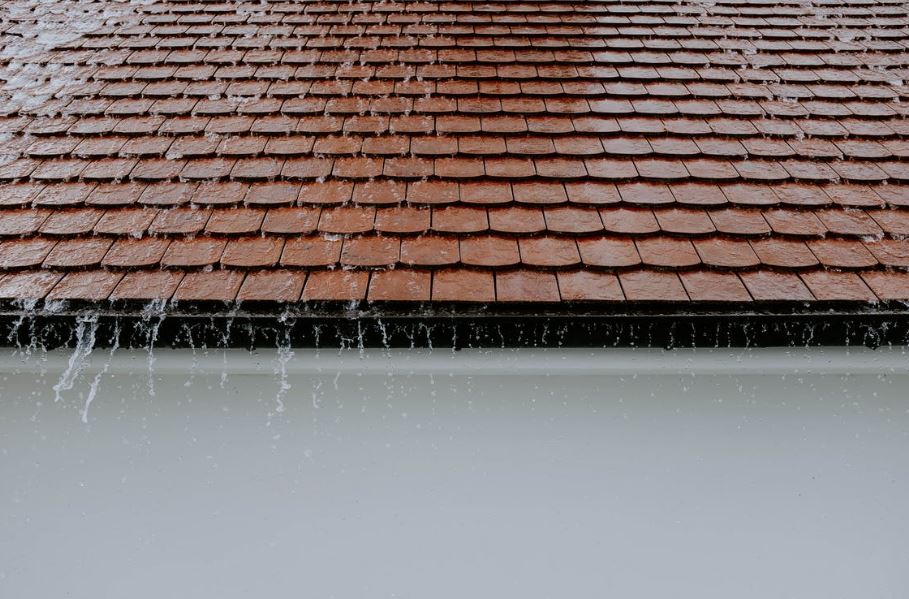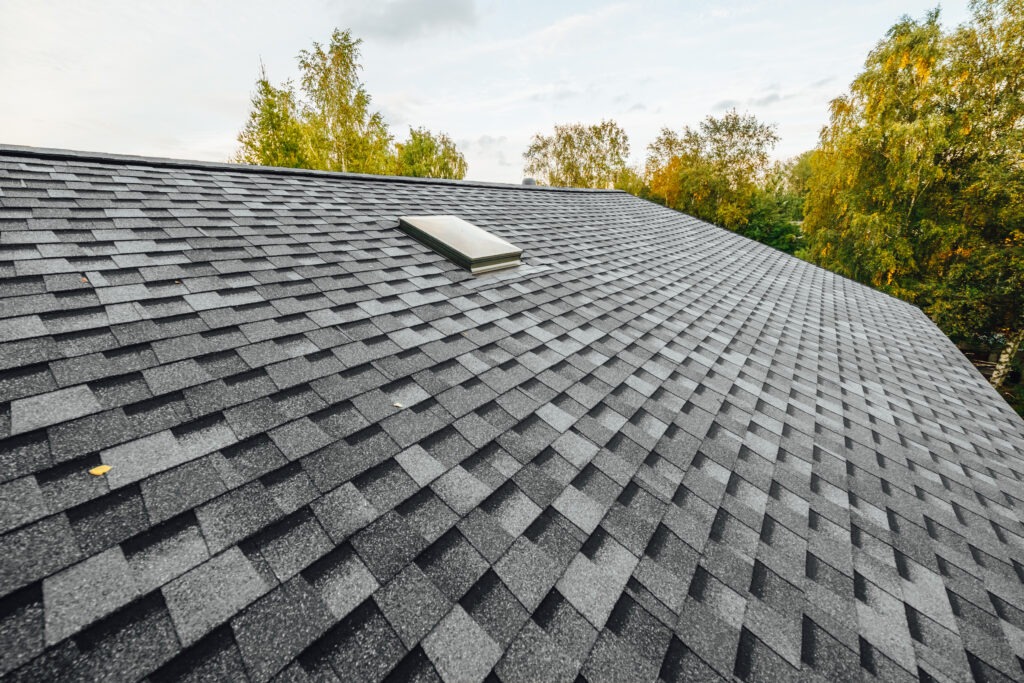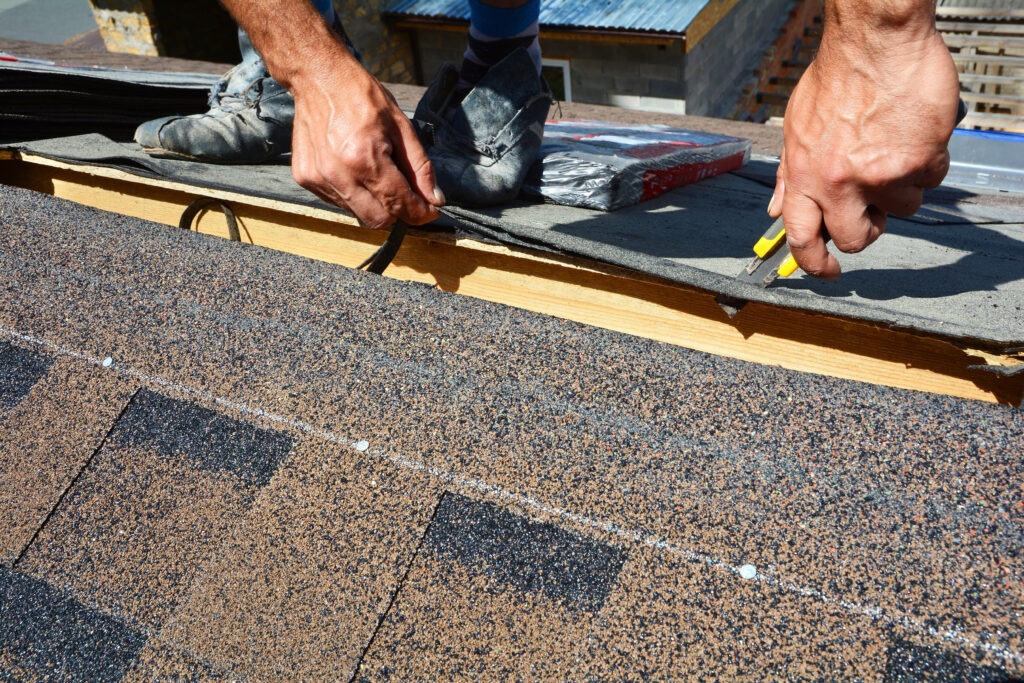Roofing underlayment is a critical part of any roofing system. It protects your roof deck from the weather and helps keep the roof in good condition. If you are considering re-roofing your home, be sure to learn about the different types of roofing underlayment so you can choose the right one for your project.
This blog post will discuss the various types of roofing underlayment and explain why they are essential. Stay tuned for more information on roofs and roofing systems!
Feel free to check out the following blog from Roof Master if you want to learn more about roof underlayment and tar paper.
What roofing underlayment is and what it does
Roofing underlayment is a material that is installed between the roof deck and the shingles. Its purpose is to help protect the roof deck from water damage in case the shingles are damaged and to provide an extra layer of protection against wind-driven rain and snow.
Many homeowners are not aware of roofing underlayment and its importance, but any concerned homeowner should be sure to ask about it when having a new roof installed. Quality underlayment can help extend the life of your roof and protect your home from costly water damage.
When shopping for a new rooftop, be sure to ask your contractor about the quality of the underlayment they will be using. Quality underlayment can mean the difference between a long-lasting roof and one that needs to be replaced prematurely.
The different types of roofing underlayment available
Most homeowners know that the roof is one of the most important parts of the house. It protects against the elements and ensures that your house is warm in winter and cool in summer.
But what many people don’t realize is that the roofing underlayment is just as necessary as the shingles themselves. Underlayment is a water-resistant barrier between the roof deck and the shingles.
There are different types of underlayment available, each with its own advantages:
Material #1 — Polypropylene
Polypropylene underlayment is lightweight and easy to install, making it a popular choice for do-it-yourselfers. However, it is not as durable as other types of underlayment and may need to be replaced more frequently.
Material #2 — Felt paper
Felt paper underlayment is made from asphalt-saturated organic materials, such as paper or fiberglass. It is more rigid and more durable than polypropylene, but it is also heavier and more challenging to work with.
Material #3 — Synthetic alternatives
Synthetic underlayment is made from man-made materials, such as polyester or fiberglass. It is lightweight and easy to install.
Why Do You Need Roofing Underlayment?
A second layer of protection provided by roofing underlayment protects your roof in the event that your shingles are torn off by strong winds. During cold weather periods, it helps shield your roof deck from harm brought on by ice dams. It protects your roof from inclement weather while it is being installed, before the attachment of the shingles.
Your home’s roofing system must include a roof covering and roofing underlayment in order to comply with local building requirements. Moreover, an underlayment is a need for the warranty from shingle makers.
Benefits of Roofing Underlayment
In order to waterproof
Several uses are served by water resistance and waterproofing. Your roof is vulnerable to leaks in the valleys, hips, and attics during heavy downpours. Using asphalt shingles frequently prevents potential water leaks. Your roof’s top layer is protected by a watertight roofing underlayment. The greatest option for a waterproof underlayment that stops leaks is rubberized asphalt, laid beneath the drip edge.
Front Appeal
Despite the fact that the roof structure may not be completely flat, roofing underlay can create a level, uniform surface on which to install your roofing tiles. Your home’s overall aesthetic could be enhanced by the neat appearance of your roof underlayment.
Heat and Moisture Barrier
The top layer of defense for the roof deck is made up of shingles. They divert sunshine, wind, and precipitation away from the top of your roofing. They also cross each other, leaving minimal space around their boundaries. The openings allow moisture and water to enter on days of heavy rain or snow. When choosing the ideal underlay solution for your home, it’s critical to consider the form, slope, and local environment to ensure that your roofing is fully protected.
Fire Protection
It is crucial to select underlayment that have received approval from industry-standard compliances for shingles in order for them to meet their Class A fire criteria. When remodeling your roof, be sure to consult a roofing expert if you have any questions.
Weather Defense
The underlay serves as a secondary layer to protect your roofing structure and the interior of your home while your shingles typically serve as the first line of protection against the weather. This additional layer of defense will shield you from water damage, mold, and needless repairs if your shingles begin to deteriorate.
Energy-Efficiency
The underlay of your roof can add an additional layer of insulation that keeps air from entering or leaving your property, whereas shingles can break, crack, and deteriorate over time. Hence, this additional line of protection can also help you avoid long-term energy costs.
A greater sense of peace
Having your underlayment installed by a qualified expert will give you and your family peace of mind that your roof will survive for many years to come. You are free from stress and worry from all the possible things that may occur.
A guide to choosing the best roofing underlayment for your roof
Finding the roofing underlayment that works best with your roof type is the most important step in choosing the proper one for your house. In contrast to a standard asphalt shingle roof, which will likely perform best with a roofing felt underlayment, metal roofs, which can trap more heat, will benefit from a synthetic underlayment with a stronger heat resistance.
Also, it’s important to consider your local surroundings and climate. If you reside in a hotter location, you should pick an underlayment that can withstand the heat; however, if you reside in a climate with frequent snowfall, you should pick an underlayment that is heavy-duty.
Last but not least, while selecting your underlayment, you should take price into account. Several roofing underlayment are suitable for various budgets. Prior to seeing what underlayment options are accessible to you, decide on your budget.
Rubberized asphalt is the ideal option if you live in an area that suffers dramatic temperature swings throughout the year. Asphalt-saturated roof underlayment is a suitable option for homes located in areas with rather regular temperatures. For locations with significant temperature variations, synthetics are a good solution.
Rubberized asphalt and roof underlayment that is saturated in asphalt work well with regular asphalt shingle roofs. It is advised to spend money on synthetic roof underlayment if your roof is made of metal since it is more heat-resistant than rubberized asphalt or underlayment that has been wet with asphalt.
If your roof needs to be durable and tear-resistant, choose synthetic roof underlayment; but, if waterproofing is more important to you, spend a little more money installing rubberized asphalt. Whatever you choose, make sure you have done your research to avoid wasting money on wrong choices.
Speak with Roofing Professionals
Using roofing underlayment may keep your home dry and safe while also extending the life of your roof. It is always simpler to prevent water intrusion than to cope with expensive repairs or damage. Roofing underlayment is essential for shielding your entire roof from inclement weather and weather-related phenomena such as hurricanes, dust storms, and rainstorms.
Consult your roofing professional to learn more about the various underlayment options you have and which will fit your roof the best. Take your time and carefully weigh all of your alternatives because the weather in your area, average temperatures, and the slope of your roof all have a significant impact on the roofing type you should choose.
Through the years, a heavy-duty underlayment can help you save time, money, and frustration by lowering the cost of roof repairs, avoiding ice jams, and limiting water infiltration. Don’t be afraid to spend your money on these things because it is solely for your personal benefit.
How to install roofing underlayment like a pro
Are you concerned about the welfare of your home? Are you wondering how you can take proactive steps to avoid expensive repairs down the road? Professional roofers recommend installing roofing underlayment as an extra layer of protection for your home.
Here are a handful of valuable tips on how to install roofing underlayment like a pro:
- Choose the right type of underlayment for your needs — There are different types of underlayment available on the market, so it’s important to choose one that is appropriate for your climate and roof type.
- Make sure the surface is clean and smooth before installation — Any debris or bumps on the surface will create problems later on, so it’s important to take the time to prep the area properly.
- Install the underlayment in sections, overlapping each piece by at least six inches — Doing this will help to ensure that there are no gaps in coverage.
- Use a mechanic’s wire or roofing nails to secure the underlayment in place — Make sure that each nail or staple is driven into the sheathing for maximum hold.
- Inspect your work after installation is complete — Walk around the perimeter of your roof to check for any missed spots or issues.
When should you replace roofing underlayment?
There are a few signs that indicate it is time to replace the roofing underlayment, such as leaks in the attic, water stains on the ceilings, or drips after heavy rains. If any of these signs are present, it is time to call a professional to inspect the roof and determine if the underlayment needs to be replaced.
Replacing roofing underlayment is not a do-it-yourself job, so it is important to call a professional who can do the job quickly and efficiently. Don’t wait until there is significant damage to the roof — replace the underlayment at the first sign of trouble.
Roofing underlayment average costs
The cost of roofing underlayment will vary depending on the size and pitch of your roof, as well as the type of materials used.
However, you can expect to spend between $250 and $1,000 on average for a complete installation. With proper care, your roofing underlayment will last for many years and help to keep your home safe from the elements.



